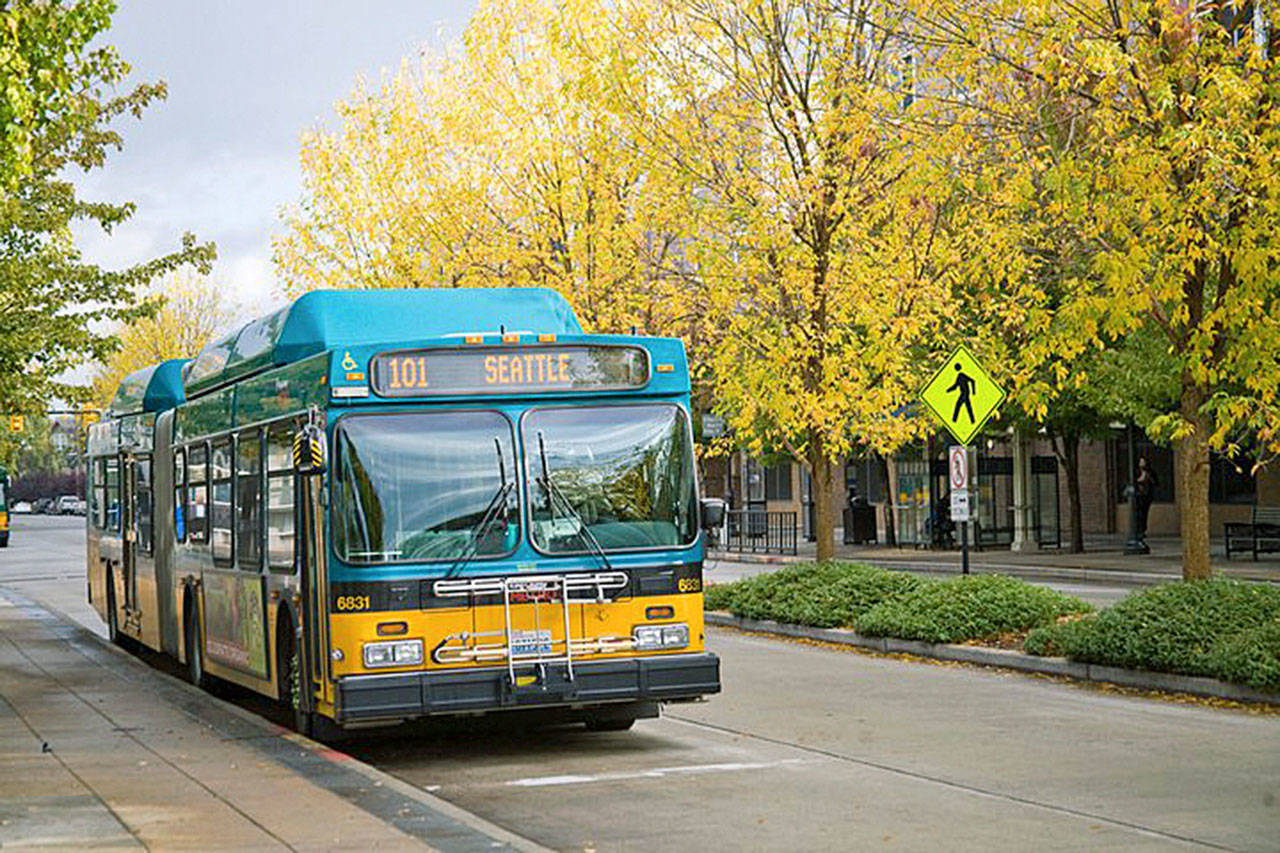Metro has one of the most complex fare structures in the nation, with one zone for the city of Seattle and another for all areas outside the city, as well as extra charges during the morning and evening commute.
One-third of riders in a recent survey said the current system is too complex and difficult to understand. In a proposal to the King County Council announced Thursday, County Executive Dow Constantine streamlined Metro fares to $2.75, and increased funding for discounted tickets.
“You said you wanted simpler fares, and we made it happen. No matter where or when you ride, simpler is better,” Constantine said. “Whether you’re traveling between Ballard and Bellevue, White Center and Westlake, or anywhere that crosses the Seattle city limits, this new fare means money in your pocket. For riders who may end up paying a little more, we’re making sure people with low incomes, seniors, and the disabled and have more access to transit than ever.”
About 65 percent of Metro customers will see no change or a fare reduction, according to boarding data.
Metro spent six months hearing from customers, and received more than 11,000 responses to two public surveys, including one in which 80 percent expressed support for a flat fare. Fares now range up to $3.25 for adult passengers depending on the time of day and zones crossed.
If the King County Council approves the proposed ordinance, it could take effect as soon as July 2018.
“This proposal makes our fare structure much simpler and easier to use, doing away with zone and peak-period fares,” said King County Councilmember Claudia Balducci, also Regional Transit Committee chair. “The result will be no change or a fare decrease for most riders and will make transit more attractive for thousands of daily riders on the Eastside and all over King County.”
An estimated 35 percent of Metro boardings take place during off-peak hours, and those passengers would pay 25 cents more.
• 21 percent of off-peak riders pay full adult fares without any subsidy or employer-sponsored pass.
• 14 percent of off-peak riders use employer or organization-sponsored transit passes.
About 31 percent of Metro riders qualify for ORCA Lift, youth, senior and disabled fares. They would see no change.
The ordinance would include additional funding to help passengers who earn very low incomes not covered by ORCA Lift and passengers least able to pay during off-peak hours:
• Increased funding for the Human Services Ticket Program, from $3.6 million to $4 million, to offset higher cost for social service agencies that distribute discount tickets. Forty-four percent of tickets sold through the program are for off-peak trips.
• Working with ORCA partners to reduce fees for adult and youth ORCA cards and eliminate the $3 card fee for seniors and people with disabilities.
• Continuing to work with schools, colleges and universities to enhance fare programs for students.
Talk to us
Please share your story tips by emailing editor@kentreporter.com.
To share your opinion for publication, submit a letter through our website https://www.kentreporter.com/submit-letter/. Include your name, address and daytime phone number. (We’ll only publish your name and hometown.) Please keep letters to 300 words or less.

